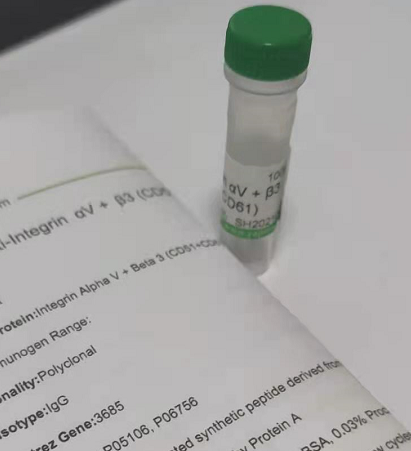| 英文名稱 | DNAH11 |
| 中文名稱 | 軸絲動(dòng)力蛋白11抗體 |
| 別 名 | axonemal; Axonemal beta dynein heavy chain 11; axonemal, heavy polypeptide 11; CILD7; Ciliary dynein heavy chain 11; DNAH11; DNAHBL; DNHBL; DPL11; DYH11_HUMAN; Dynein heavy chain 11; dynein, ciliary, heavy chain 11. |
| 研究領(lǐng)域 | 細(xì)胞生物 信號(hào)轉(zhuǎn)導(dǎo) 細(xì)胞骨架 |
| 抗體來源 | Rabbit |
| 克隆類型 | Polyclonal |
| 交叉反應(yīng) | (predicted: Human, Mouse, Rat, Dog, Pig, Cow, Horse, Rabbit, Sheep, ) |
| 產(chǎn)品應(yīng)用 | ELISA=1:5000-10000 IHC-P=1:100-500 IHC-F=1:100-500 ICC=1:100-500 IF=1:100-500 (石蠟切片需做抗原修復(fù)) not yet tested in other applications. optimal dilutions/concentrations should be determined by the end user. |
| 理論分子量 | 521kDa |
| 細(xì)胞定位 | 細(xì)胞漿 |
| 性 狀 | Liquid |
| 濃 度 | 1mg/ml |
| 免 疫 原 | KLH conjugated synthetic peptide derived from human DNAH11: 1701-1800/4523 |
| 亞 型 | IgG |
| 純化方法 | affinity purified by Protein A |
| 緩 沖 液 | 0.01M TBS(pH7.4) with 1% BSA, 0.03% Proclin300 and 50% Glycerol. |
| 保存條件 | Shipped at 4℃. Store at -20 °C for one year. Avoid repeated freeze/thaw cycles. |
| 注意事項(xiàng) | This product as supplied is intended for research use only, not for use in human, therapeutic or diagnostic applications. |
| PubMed | PubMed |
| 產(chǎn)品介紹 | This gene encodes a ciliary outer dynein arm protein and is a member of the dynein heavy chain family. It is a microtubule-dependent motor ATPase and has been reported to be involved in the movement of respiratory cilia. Mutations in this gene have been implicated in causing Kartagener Syndrome (a combination of situs inversus totalis and Primary Ciliary Dyskinesia (PCD), also called Immotile Cilia Syndrome 1 (ICS1)) and male sterility. [provided by RefSeq, Mar 2013] Function: Force generating protein of respiratory cilia. Produces force towards the minus ends of microtubules. Dynein has ATPase activity; the force-producing power stroke is thought to occur on release of ADP. Subcellular Location: Cytoplasm; cytoskeleton; cilium axoneme. DISEASE: Defects in DNAH11 are a cause of Kartagener syndrome (KTGS) [MIM:244400]. KTGS is an autosomal recessive disorder characterized by the association of primary ciliary dyskinesia with situs inversus. Clinical features include recurrent respiratory infections, bronchiectasis, infertility, and lateral transposition of the viscera of the thorax and abdomen. The situs inversus is most often total, although it can be partial in some cases (isolated dextrocardia or isolated transposition of abdominal viscera). Defects in DNAH11 are the cause of primary ciliary dyskinesia type 7 (CILD7) [MIM:611884]. CILD is an autosomal recessive disorder characterized by axonemal abnormalities of motile cilia. Respiratory infections leading to chronic inflammation and bronchiectasis are recurrent, due to defects in the respiratory cilia; reduced fertility is often observed in male patients due to abnormalities of sperm tails. Half of the patients exhibit situs inversus, due to dysfunction of monocilia at the embryonic node and randomization of left-right body asymmetry. Primary ciliary dyskinesia associated with situs inversus is referred to as Kartagener syndrome. |
我要詢價(jià)
*聯(lián)系方式:
(可以是QQ、MSN、電子郵箱、電話等,您的聯(lián)系方式不會(huì)被公開)
*內(nèi)容:









